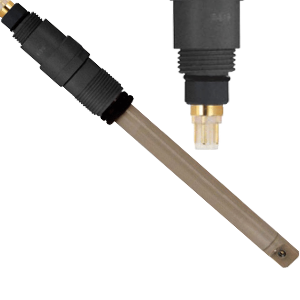 pH electrodes can be mainly classified into the following types based on their structure, function and application scenarios:
pH electrodes can be mainly classified into the following types based on their structure, function and application scenarios:
I. Classification by electrode structure
Glass electrode
The core component is a glass membrane bulb sensitive to H⁺, filled with reference electrolyte and inserted with an Ag/AgCl internal reference electrode. It is the most commonly used pH indicator electrode.
It is divided into plastic shell (corrosion-resistant and suitable for on-site use) and glass shell (for laboratory use) composite electrodes.
Composite electrode
Integrate the pH glass electrode with a reference electrode (such as Ag/AgCl or calomel electrode) to form a two-in-one or three-in-one (including a temperature sensor) structure.
The three-in-one electrode supports automatic temperature compensation and is suitable for high-temperature/strong acid and strong alkali environments.
Ii. Classification by reference system
Liquid reference electrode
When using saturated KCl solution, the electrolyte needs to be filled regularly.
Gel electrode
The reference solution is KCl gel, which is maintenance-free and suitable for field use.
Solid-state reference electrode
It adopts solid electrolyte and is resistant to high temperature and high pressure.
Iii. Classification by Special applications
Pure water electrode
Designed specifically for low ionic strength liquids such as distilled water and RO water, it optimizes impedance matching.
Industrial electrode
Integrated PT100 temperature sensor, featuring PPS/PC housing, suitable for harsh working conditions such as sewage treatment and explosion-proof environments.
Planar/needled electrode
It is respectively used for surface pH measurement (such as skin, food) and trace sample detection.
Iv. Other naming types
ROSS electrode : Special glass formula for faster response.
ORP electrode : With REDOX potential detection function.
Users need to select the appropriate electrode type based on the measurement scenario (such as temperature, corrosiveness, and ionic strength).
Quesions
The structure and classification of pH electrodes
Date:2025-05-25 Views: 31





